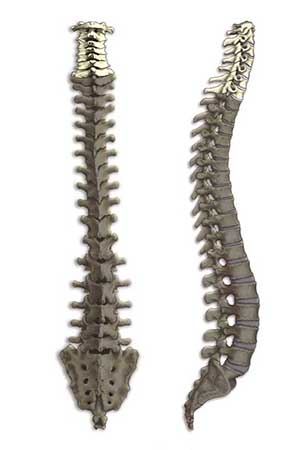Cervical Spine
About the cervical spine
 |
The cervical spine refers to the seven spinal bones (vertebrae) in the neck. It supports the head and connects to the thoracic spine.
Most of the ability to turn the head comes from the top two segments of the cervical spine. The first segment (the atlas) is a bony ring without a vertebral body and moves with the bottom of the skull. It rests on and moves around the second cervical vertebrae (the axis), which has a post-like projection that rests just inside the atlas and allows for most of the ability to turn the head from side to side. Most of the ability to move the head forward (flexion) and backward (extension) is evenly distributed among the remaining cervical vertebrae.
The vertebrae of the cervical spine (known as C2 to C6) have openings for arteries to carry blood to the brain. The bodies and discs are smaller in the neck because they carry the least weight.
Though the cervical spine is very flexible, it is also at risk for injury from strong, sudden movements, such as whiplash-type injuries. This high risk of harm is due to the weight of the head and the limited muscle support in the cervical area.
The seventh cervical segment functions as a transitional segment from the neck to the thoracic spine. It can be the source of a cervical rib syndrome, in which the transverse process grows large enough to affect an exiting nerve root.
Cedars-Sinai has a range of comprehensive treatment options.
Connect with providers for illnesses like flus, UTIs and rashes (ages 3+) or chronic conditions like asthma, weight management and diabetes (ages 18+).

